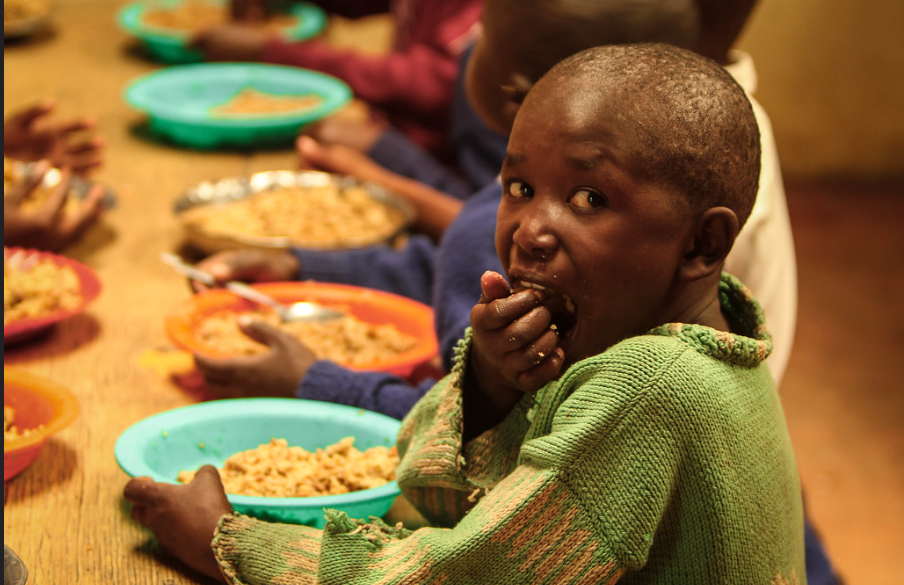FACTBOX-Afghanistan's hunger and poverty crisis in numbers
Governments responded to the Islamist militant group's takeover in mid-August by freezing billions of dollars of Afghan assets overseas and halting most international funding to the aid-reliant nation of about 40 million people. Here are some facts about the crisis: - A record 23 million Afghans - more than half the population - face acute hunger, with nearly 9 million one step from famine, according to the World Food Programme (WFP). - Up to 1 million children under five are at risk of dying from malnutrition.

With Afghanistan fast becoming the world's worst humanitarian crisis, U.N. agencies asked donors on Tuesday for $4.4 billion in humanitarian aid for 2022, the largest appeal ever sought for a single country.
Millions of Afghans are at risk of famine as one of the country's worst droughts in decades is compounded by an economic meltdown following the Taliban's sudden return to power last year. Governments responded to the Islamist militant group's takeover in mid-August by freezing billions of dollars of Afghan assets overseas and halting most international funding to the aid-reliant nation of about 40 million people.
Here are some facts about the crisis: - A record 23 million Afghans - more than half the population - face acute hunger, with nearly 9 million one step from famine, according to the World Food Programme (WFP).
- Up to 1 million children under five are at risk of dying from malnutrition. - Four-fifths of the country is experiencing a severe or serious drought. About 70% of Afghans live in rural areas, and 85% derive income from agriculture.
- About 3.5 million Afghans have been internally displaced by violence, drought, and other disasters, including 700,000 last year. - The U.N. Development Programme (UNDP) has warned that 97% could fall below the poverty line by mid-2022. About half of the population lived in poverty before the Taliban takeover.
- Annual per capita income was $508 in 2020, down from $650 in 2012. It is expected to fall to $350 this year. - Economists predict it could take $2 billion to lift all people in extreme poverty up to the poverty line.
- Before the Taliban takeover, international aid contributed as much as 40% of gross domestic product (GDP), and about three-quarters of government spending, paying for everything from electricity imports to healthcare and teachers' salaries. - Following the takeover, the International Monetary Fund predicted Afghanistan's economy could contract by up to 30% in 2021.
- Restricting female employment - as the Taliban have done - could inflict an immediate economic loss of between $600 million and $1 billion (3-5% of GDP). - Annual development assistance, which was suspended after the Taliban's takeover, was $4.2 billion in 2019 - down from a high of $6.7 billion in 2011, according to World Bank data.
- Humanitarian aid, a smaller portion of overall past assistance, has continued since the takeover, amounting to $1.72 billion in 2021 - up from $733 million in 2020 and $585 million in 2019. - The U.N.-appeal launched on Tuesday aims to shore up basic services, ensuring health workers and others are paid directly without funds going to the Taliban. https://news.un.org/en/story/2022/01/1109492.
Another $623 million is needed to support Afghan refugees and host communities in five neighboring countries, the U.N. refugee agency (UNHCR) said. Sources: UNDP, WFP, U.N. Food, and Agriculture Organization (FAO), the United Nations Office for the Coordination of Humanitarian Affairs (OCHA), World Bank, International Crisis Group
(This story has not been edited by Devdiscourse staff and is auto-generated from a syndicated feed.)
ALSO READ
World Bank, ARTF support financing for micro and small enterprises in Afghanistan
New World Bank program to expand electricity network through private sector participation in Ethiopia
CAA, related rules brought to safeguard rights of minorities from Pak, Afghanistan & B'desh, says fresh plea
World Bank allocates USD 16 million to support women-led businesses in Afghanistan
World Bank loans Ethiopia $1.72 bln for power, water supply expansion










